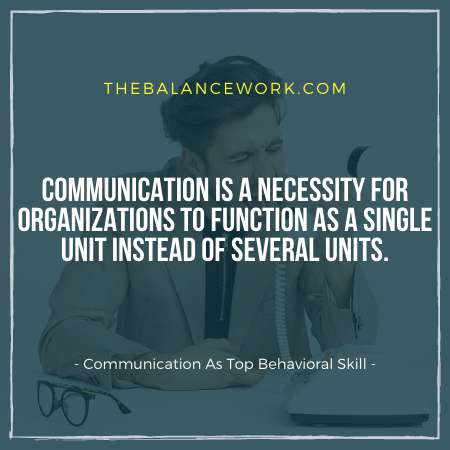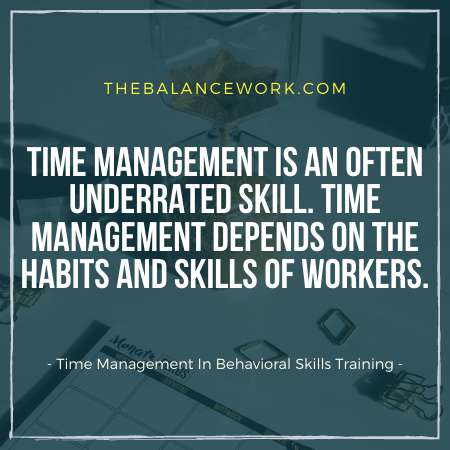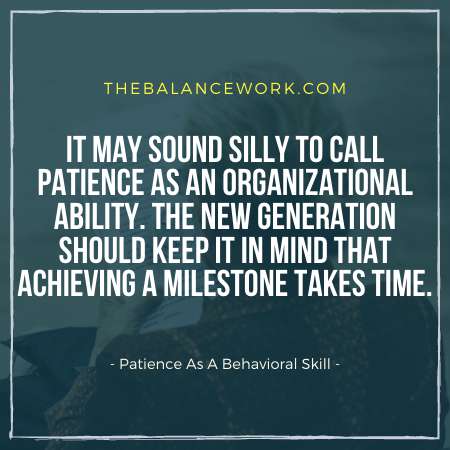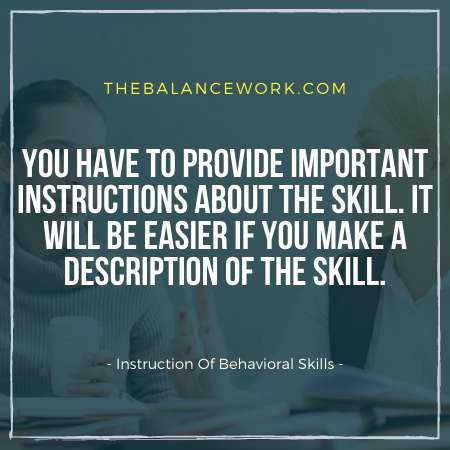If you are an employer and you are expecting your employees to be perfect. Then you are doing it wrong without behavioral skills training.
Employees always need training, and their growth depends on you.
Also, they look up to you how you establish the workplace because they can’t do it on their own.
Behavioral skills training is a strategy one can use to train people.
It is a method to teach students, staff, parents or anyone else you are teaching a new skill.
Top 7 Behavioral Skills To Develop In Your Employees:
Here we are going to discuss 7 topmost behavioral skills to develop in your employees.
If you want to develop these skills in your employees and want to know these skills. Do check below:
1. Communication As Top Behavioral Skill:
Communication is the most important element of any workplace. And its importance goes to peak in shared workplaces. Because at such places employees have to collaborate.
It’s a necessity for organizations to function as a single unit instead of several units. So your employees must adopt that culture set by you.

Technology can ease good communication between team members. You can use software platforms for this purpose.
These platforms have built-in features. And you can check the project progress through it.
SEE ALSO: What Is A Cross-Functional Team
2. Balance In Work And Personal Life:
It’s a common thing that you expect from your employees to work as much as possible. But it’s not the right way to work.
Working too much can cause mental and physical stress. And a disturbance in work schedules will follow it.
So no work will be in stable condition.
You should establish a stable work environment. Try to encourage your employees to finish you work at home.
You can also try to install a flexible work routine. It would give freedom to employees for managing their schedules.
3. Conflict Resolution In Behavioral Skills Training:
When there is an imbalance in the interpersonal relations of your employees. You should give them the ability to resolve these conflicts.
Your trainees must be capable to confront the tension between themselves. They need to resolve any disagreement that arises.
4. Time Management In Behavioral Skills Training:
Time management is an often underrated skill. It’s not about employees’ ability to set a time frame.
Rather it refers to the ability to execute work to finish tasks on time.
Time management depends on the habits and skills of workers.
And you can develop their time management ability during the performance.

5. One Of The Common Behavioral Skills Is Stress Management:
Stress management is a valuable skill. It helps people to balance the various forces and activities in their daily life.
Stress management is the name of fighting the heavy stress from a job or other life factors.
The most suitable thing one should do is to turn the attention to another activity.
SEE ALSO: Barriers To Critical Thinking
6. Self-Improvement:
Make sure that your employees have this constant desire to improve themselves.
You can give employees the mindset to self-evaluation and improve themselves.
They can improve themselves by analyzing their work style, workplace behavior, and habits at the workplace.
7. Patience:
It may sound silly to call patience as an organizational ability. And it may be a less conventional skill.
But the truth is that with the fast-moving technology one needs to maintain patience.
The new generation should keep it in mind that achieving a milestone takes time.

You should plan out a long term hiring strategy for helping people develop patience.
4 Most Important Steps Involved In Behavioral Skills Training:
Behavioral skills training consists of four steps. These steps play an important role in teaching new behaviors or skills.
The steps involved in this procedure are instruction, modeling, rehearsal, feedback.
Behavioral skills training (BST) teaches a person what to do. It tells people about what behaviors to show in specific circumstances.
To create fluency for skills in people, it allows a lot of practice. It’s an effective process to train the trainer.
The most important part of BST is that it can vary from person to person. That’s interesting enough. Right?
Learn about these four steps in a bit of detail.
1. Instruction Of Behavioral Skills:
First of all, you have to provide important instructions about the skill. It will be easier if you make a description of the skill. And give it to the trainees.

The description must contain the necessary information. Like importance or rationale of skill, when and when not to use the skill.
2. Modeling:
Now you have to model that skill before your trainee. Give the practical performance of skill and show your participant how to perform it.
This will leave a mark on the participant and he would feel inspired and motivated.
For this purpose, the most recommended method is in-vivo modeling.
3. Rehearsal Of Behavioral Skills:
Practice makes a man perfect. Make your participant practice the skill as much as he can.
Practicing the skill would make him confident more and more.

According to researches, you should allow the participant to practice in real-time situations.
This will help him not to make mistakes while using the skills in real life.
You can record the data on correct and incorrect responses during rehearsal.
4. Feedback Of Learning:
Feedback is important. If the trainee performed well, praise will motivate him for the next time.
In case if he didn’t perform well, he needs correction.
So you should provide positive feedback for his correct responses during practice.
And you can give him some sort of corrective feedback for incorrect responses.
Things To Keep In Mind Before Starting Behavioral Skills Training:
Using steps of behavioral skills training you can apply this to your participants.
Make sure not to miss any of these steps and ensure coordination between the steps.
Behavior training depends a lot on the kind of workplace. One thing you should do to support BST is to develop an effective workplace.
Establishing an environment that contains communication and balance can be helpful.
In this way, you can increase the performance of your employees. And also you can help them meet job satisfaction while working with you.
The nature of the workplace should be stimulating for growth skills nourishment. So that it can promote a balanced and fruitful work setting.
People with the right technical skills aren’t enough for making your workforce.

So the people you hire should be able to use their interpersonal skills.
They must know how to use these skills in different situations. And also while working with different individuals.
Here are some behavioral skills you should look towards while establishing the workplace.
Before implementing the BST on your employees, make sure they have these requirements:
– The employee getting the training must have some pre-requisite skills. These skills are the ones required for the behaviors you are teaching them.
– The skills must include a chain of behaviors. That means there should be many skills.
– You must be able to role-play and video model the skills. It means you should have the capability to portray yourself in these behaviors.
Conclusion
Behavioral skills training lays the groundwork for an effective work environment. It increases the interaction between people. And they get the ability to adapt more and more skills.
Several variations in behavioral skills training exist. But the general model is the one we discussed.
BST is a remarkable process where the trainer first explains the skills to the learner. Then he models how to do it.
After that, he invites the learner to rehearse the skill with him. During role-play, the trainer gives feedback on the learner’s performance.
So these four critical steps are the main pillars of behavioral skills training.
These components get implemented when there is a pre-set criterion.
Applying BST can be very helpful for organizations. As their employees would start to view the company as more than a source of income.
Do comment what you like most about behavioral skills training.
Last Updated on 1 year by Shahzaib Arshad
- 7 Great Signs Your Boss Wants to Help You - October 8, 2023
- How To Explain Dropping Out Of Law School? Detailed Guide - September 6, 2023
- 10 Reasons Employees Get Fired in Workplace - August 27, 2023